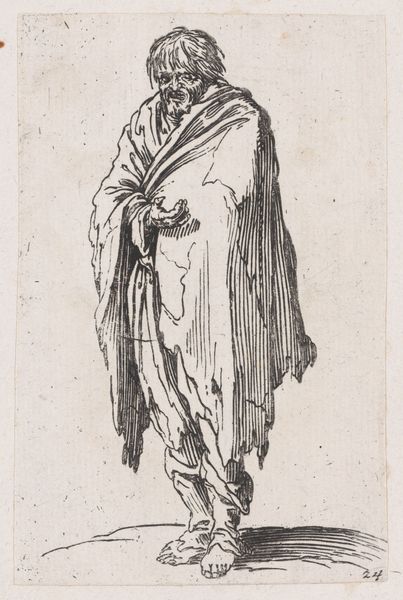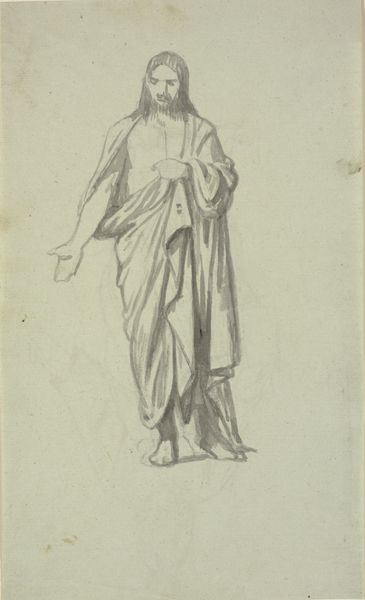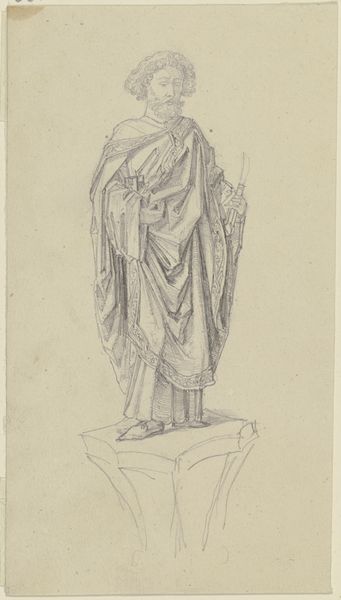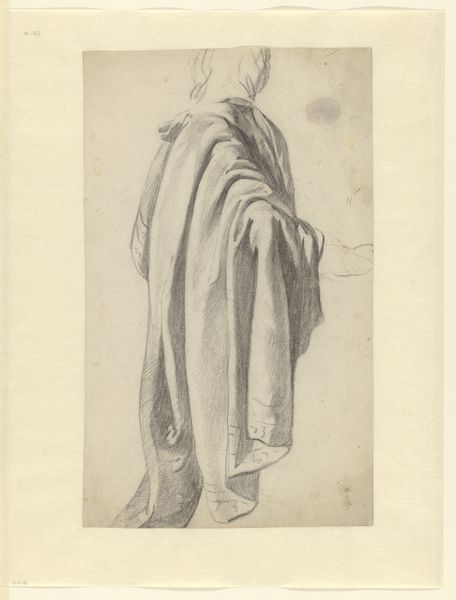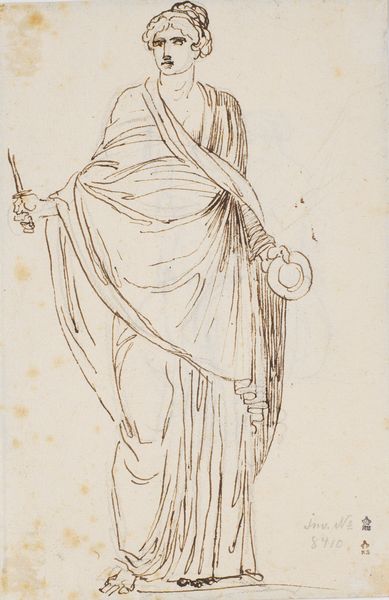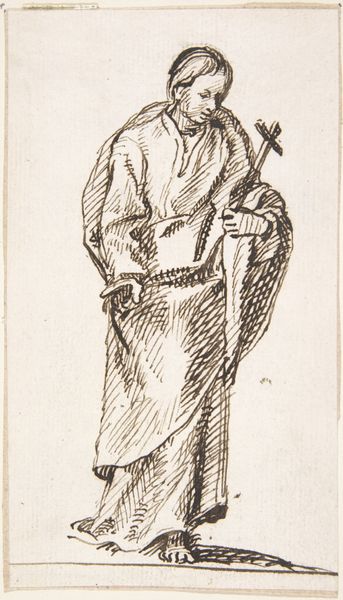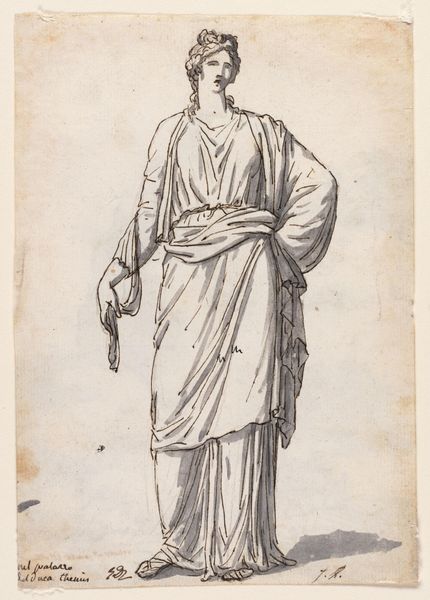
drawing, pencil
#
drawing
#
pencil sketch
#
romanticism
#
pencil
#
academic-art
Dimensions: 316 mm (height) x 189 mm (width) (bladmaal)
Editor: Here we have "Kristusskikkelse," or "Figure of Christ" created between 1810 and 1870 by Wilhelm Marstrand. It’s a pencil drawing on paper. I find it fascinating how the artist captured so much with so few lines. What can you tell me about the socio-political context of this piece? Curator: This drawing reflects the rise of Romanticism, which moved away from Neoclassical ideals and embraced emotion and spirituality. The image of Christ itself, regardless of religious belief, held powerful cultural and political weight, representing ideas of compassion, sacrifice, and moral authority, all concepts heavily debated at the time in Europe. Do you see any elements suggesting academic art practices? Editor: Yes, the attention to anatomical detail, even in a sketch, feels very studied. It’s not just an emotional outpouring; it's a carefully considered representation. Were these types of drawings often displayed publicly, or were they mostly for private study? Curator: That's a key question! Often, these preparatory drawings, especially those of religious figures, served dual purposes. They could be used for academic instruction in art schools to train artists in rendering the human figure. But these were also statements intended to show the capability of an artist. Publicly exhibiting them reinforced the artist's reputation. It also solidified the Church's influence, regardless of where you fell politically. How does knowing this influence how you view the work? Editor: It definitely changes my perspective. I was initially drawn to the perceived simplicity and vulnerability in this figure but now realize it may have served more purposes than that, and had greater political ramifications too. Curator: Exactly. Art rarely exists in a vacuum. Examining the social and institutional contexts illuminates its power. I feel I better understand the intersection between personal spiritual expression and public performance it embodies.
Comments
No comments
Be the first to comment and join the conversation on the ultimate creative platform.
